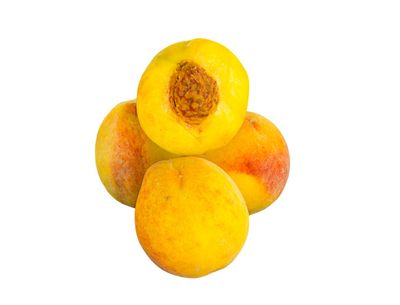About Peaches That are Yellow
There are over 4,000 peach and nectarine varieties with new ones constantly being bred. Of course, not all of these cultivars are available on the market. Unlike apple varieties, most peaches look similar to the average person, so no singular variety has dominated the market, which allows peach tree breeders to continue to come up with new improved varieties. Perhaps the biggest choice a prospective grower must make is whether to grow clingstone, freestone, or semi-clingstone fruit. Clingstone yellow peach cultivars are those whose flesh adheres to the pit. They often have fibrous, firm flesh and are usually the early-season, yellow peach varieties. Freestone refers to peaches where the flesh easily separates from the pit when the fruit is cut in half. People that want to eat peaches fresh out of hand often prefer freestone yellow peaches. Semi-clingstone or semi-freestone, just means that the fruit is primarily freestone by the time it has ripened.
Cultivars of Yellow Flesh Peaches
Rich May is a small to medium early-season variety, primarily red over yellow green clingstone with firm flesh and acidic taste and a medium susceptibility to bacterial spot. Queencrest is similar in all respects to Rich May but ripens slightly later. Spring Flame is a medium, semi-clingstone with good fruit size and flavor and a high susceptibility to bacterial spot. Desire NJ 350 is a medium-sized, red over yellow colored clingstone. Sunbrite is a small to medium, clingstone peach that ripens around June 28-July 3. Flamin Fury is a small to medium, scarlet over greenish yellow clingstone with medium, firm flesh and good flavor. Carored is an early-season, small to medium, yellow flesh clingstone peach with “melting” good flavor. Spring Prince is another small to medium clingstone with fair to good flavor. Early Star has firm, melting flesh and is very productive. Harrow Dawn produces medium peaches that are recommended for home orchards. Ruby Prince is a medium-sized, semi-clingstone peach that has a melting flesh and good flavor. Sentry produces medium to large peaches, has low susceptibility to bacterial spot, and ripens around the second week of July. The list is improbably long for yellow fleshed peaches and the above is only a small selection based only on the number of days from ripening after Red Haven. Red Haven is a hybrid introduced in 1940 that is a consistent producer of semi-freestone peaches of moderate size with firm flesh and good flavor. It is somewhat of the gold standard for commercial peach orchards, as it is tolerant of low winter temperatures and a reliable producer.
